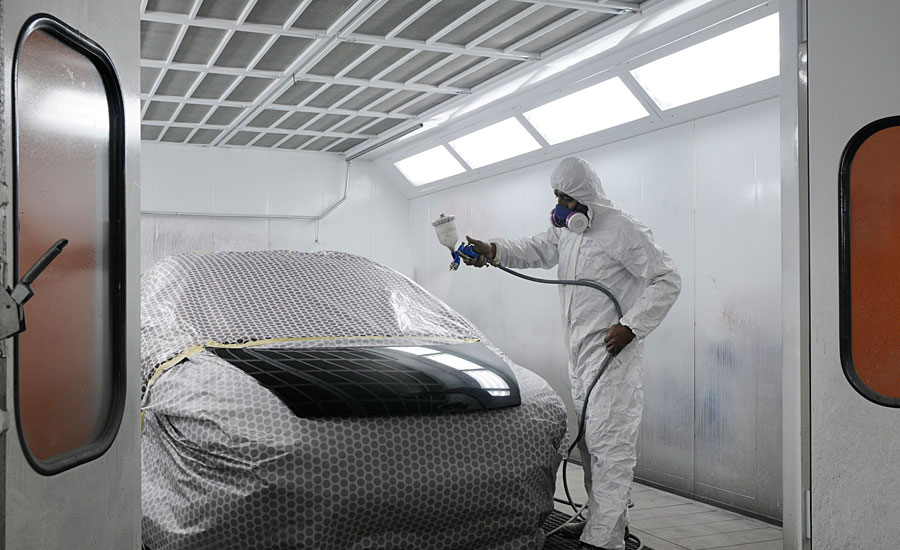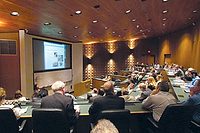DSCT FOCUS: Driving Change in Automotive Coatings

TROY, MI - A lot has changed in automotive coatings, and the premier automotive coatings conference, Future Of Coatings Under Study (FOCUS), has been helping coatings formulators to stay on the leading edge of technology. The Detroit Society for Coatings Technology (DSCT) organizes the FOCUS conference, which is celebrating its 42nd anniversary on May 4, 2017. In those 42 years, great changes have come to automotive coatings.
In 1975, the United States was reeling from the after-effects of the oil embargo. A shortage of petroleum based-feedstocks and solvents led to companies exploring water-based technologies. Until that point, the coatings used were low solids solvent based. High-solids coatings were being introduced to comply with regulations on smog-enabling chemicals. The low- to medium-solids pigmented and metallic monocoats of the late 1970s and early 1980s were soon replaced by high-solids basecoat and clearcoat systems. The basecoat/clearcoat systems proved to be more durable and offered superior appearance. By the late 1980s, basecoat/clearcoat was the predominant automotive coating system. Chrysler was the first to adopt the acrylic high-solids basecoat/clearcoat system, and others soon followed. Initially, Ford preferred a low-solids polyester in its basecoat/clearcoat system for improved distinctness of image and then moved to the high-solids basecoat/clearcoat system.
In the late 1970s, another great step forward in coatings protection debuted: cathodic electrocoat (e-coat) primers. While anodic electrocoat came out a few years earlier, cathodic electrocoat was far superior in corrosion resistance. The spray primers, used before electrocoat, had issues getting into difficult-to-reach regions where corrosion would start. Electrocoat mitigated this problem. The spray primers provided improved adhesion over electrocoat, but were replaced by highsolids primers in the 1980s to lower VOC emissions. Powder primers followed in the 1990s, further reducing overall system VOCs. Today’s electrocoat/primer combination provides excellent corrosion protection, a smooth surface for the basecoat/clearcoat system and helps prevent inter-coat adhesion failure.
There has been a tremendous amount of work done to reduce the number of layers in today’s paint systems, but durability requirements have been a major obstacle to achieving this end. The evolution of light weighting of automotive components for fuel savings has led to the use of aluminum and composite materials. Although these components are not nearly as susceptible to corrosion, they present different coatings issues, and hence, a whole new era of paint formulation is on the horizon. It is this new era for which FOCUS will be at the forefront in helping formulators innovate, adapt and overcome.
Throughout the last 42 years, FOCUS has been the leading conference for automotive coatings. FOCUS is unique in that many presentations are given by representatives of the automotive companies, not just by suppliers to the industry. This year, Colm Boran, Manager in the Ford Autonomous Vehicle Platform, will give the keynote address.
Some FOCUS milestones over the last 40 years include:
- April 29, 1976 - Inaugural FOCUS Conference, “Automotive Coatings Systems,”
- 1993 - Move from a single-track to dual-track presentations, 14 speakers,
- 1994 - First keynote speaker,
- 1998 - First tutorial “Painting & Processing Plastics,”
- 2002 - Coatings Products Showcase added,
- 2006 – Student posters added to support coatings education, and
- 2014 – Panel discussion added to seek perspectives from the experts on pressing concerns and emerging trends.
FOCUS aims to be at the forefront industry of trends. The 1995 conference was titled “Compliant Coatings: 2000 & Beyond,” and in 1998 it was “Innovative Coatings: Practical Solutions for Global Demand.” Recent FOCUS themes include “Transformation in Transportation Coatings” (2008), “Clean Green and Lean” (2009), “The Fusion of Technology and Design” (2011) and “Keeping FOCUS for 40 Years” (2015). In 2000, FOCUS was proud to display a powder-slurry-coated car.
FOCUS attendance has increased substantially over the years and 2017 promises to be another successful year.
For additional information about FOCUS, visit www.dsctfocus.org.
Looking for a reprint of this article?
From high-res PDFs to custom plaques, order your copy today!






